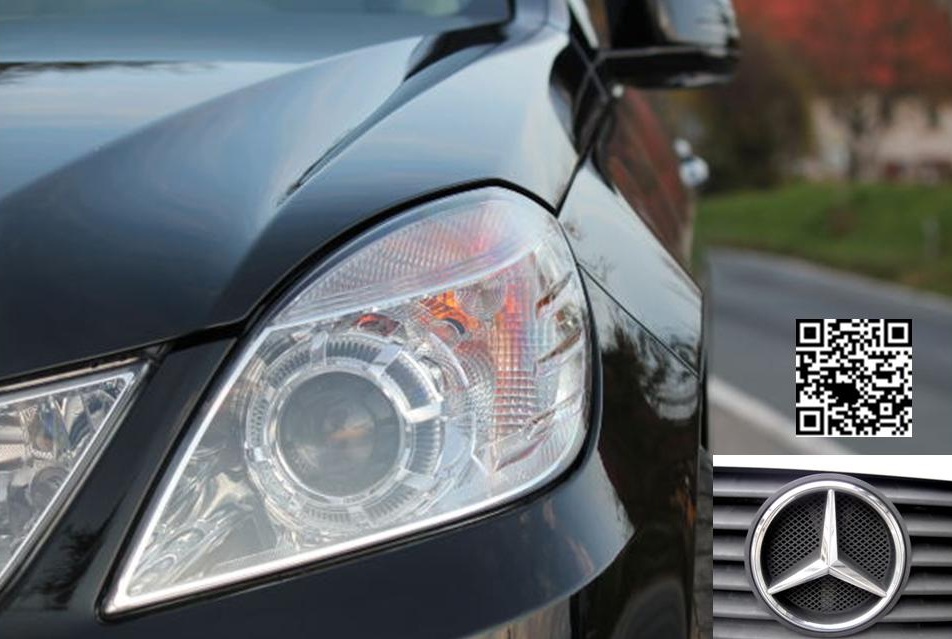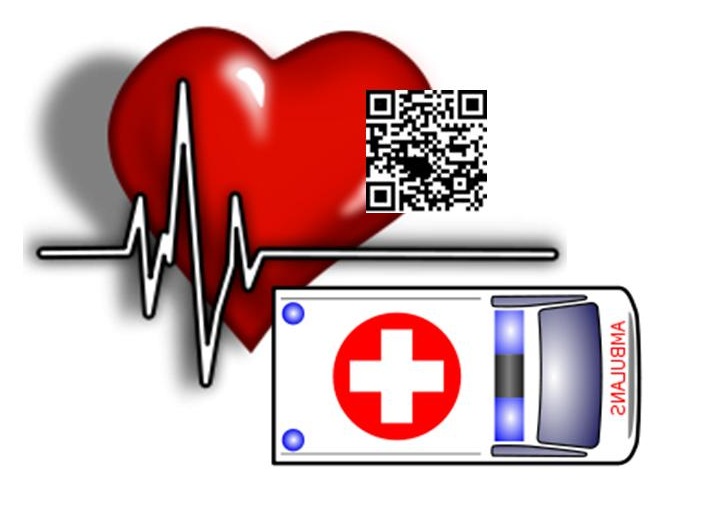Mercedes is using the barcodes to help emergency responders to better rescue people from crashes.
A new system using QR codes is in the works by Mercedes Benz that is being designed to assist emergency workers to be able to more quickly and safely extract the occupants of vehicles that have been involved in an accident that has trapped them inside.
The system helps to show emergency workers exactly how to remove passengers from the vehicles.
It is designed to combine the use of QR codes with rescue sheets that show police, firefighters, and paramedics the information that they require to know just where to use their “jaws of life” rescue sheers to extract passengers who are trapped within the vehicles. It provides them with information about the air bags, hydraulic lines, and any electrical cables, as well as other useful data about the vehicle and where it is safe and appropriate to cut through them.
The QR codes are printed on two stickers where the barcodes are displayed quite prominently.
 By scanning those QR codes using mobile devices such as tablets and smartphones, rescue workers are able to obtain immediate access to this information so that they can act quickly, appropriately, and with the greatest amount of safety to remove the occupants of a crashed car. The goal is to help to work with the rescue workers to reduce the amount of time needed to cut open a vehicle, and therefore save lives.
By scanning those QR codes using mobile devices such as tablets and smartphones, rescue workers are able to obtain immediate access to this information so that they can act quickly, appropriately, and with the greatest amount of safety to remove the occupants of a crashed car. The goal is to help to work with the rescue workers to reduce the amount of time needed to cut open a vehicle, and therefore save lives.
At the moment, rescue workers must either depend on hard copies of the rescue sheets, or they are required to search for the information online – assuming that this information has been made available on the internet. Now, Mercedes Benz is making sure that all of the required data for its vehicles, and that this information is linked to the QR codes.
In an expansion of that effort to save more lives, Mercedes Benz has waived its right to patent the system using the QR codes to access vehicle schematics by emergency workers who need to extract trapped people in vehicles. They are hoping that other automakers will, therefore, choose to take advantage of this technology which will already have been developed.
 By personalizing the barcodes, first responders can gain immediate access to patient information.
By personalizing the barcodes, first responders can gain immediate access to patient information.
A contest called the Startup Weekend Health competition in Philadelphia was held for the second time this year, and in this instance, it was won by a concept for using personalized QR codes that provide emergency responders, such as paramedics, to scan them in order to obtain relevant patient data.
This use of the barcodes allows the medical professionals to obtain vital information right away.
Even if a patient has been rendered unconscious, is in shock, or is unable to provide accurate information, the QR codes give the first responders access to his or her medical information. The hope is that by using technology in this way, it could help medical personnel to reduce the chance of accidentally administering the wrong type of treatment to a patient.
The data revealed by the QR codes could help an emergency responder to better save a life.
This is because by scanning the QR codes in an emergency room or even out when a paramedic is responding to a call, the patient’s allergies, the medications that he or she is taking, and his or her medical conditions can be revealed. This can help the responder to make a decision that is more appropriate to the needs of that specific individual.
Moreover, When the right app is used, it becomes possible for QR codes to give the medical responders the ability to send out a text message to the patient’s emergency contacts. This way, even more information can become available, and personal support can become available to that patient.
The entire concept for the QR codes used in this way was pitched for the contest by a team from the In Case of Emergency (mICE) program. The leader of that group, David Bendell, made the actual pitch, and the entire plan for the program itself was put together by a team of seven people within 48 hours of the pitch itself. Though they won first prize – an interview with DreamIt Health, their main concern is now that two members of the team (including Bendell, himself) are international students. They will need to find full time jobs before May 2013 or their visas will run out before they can continue this project.
 By scanning those QR codes using mobile devices such as tablets and smartphones, rescue workers are able to obtain immediate access to this information so that they can act quickly, appropriately, and with the greatest amount of safety to remove the occupants of a crashed car. The goal is to help to work with the rescue workers to reduce the amount of time needed to cut open a vehicle, and therefore save lives.
By scanning those QR codes using mobile devices such as tablets and smartphones, rescue workers are able to obtain immediate access to this information so that they can act quickly, appropriately, and with the greatest amount of safety to remove the occupants of a crashed car. The goal is to help to work with the rescue workers to reduce the amount of time needed to cut open a vehicle, and therefore save lives.
 By personalizing the barcodes, first responders can gain immediate access to patient information.
By personalizing the barcodes, first responders can gain immediate access to patient information.